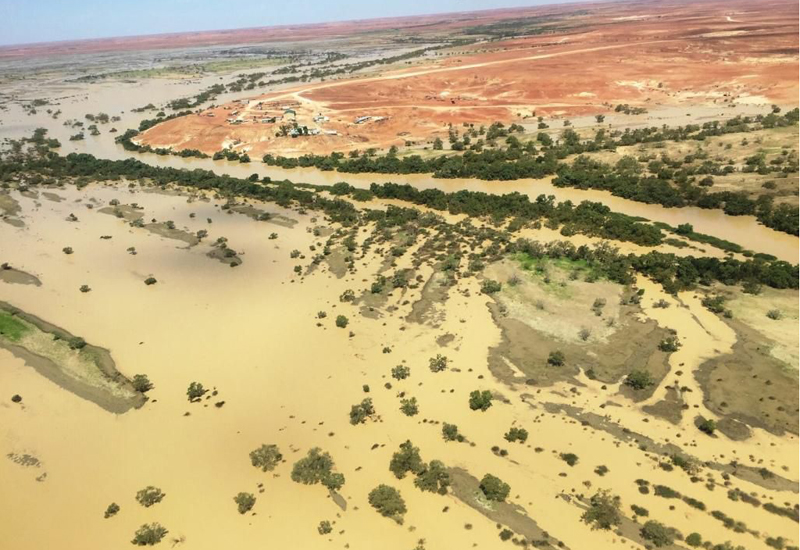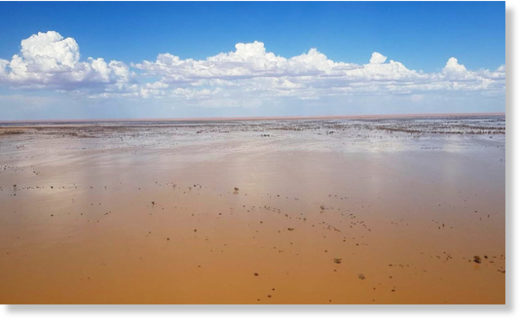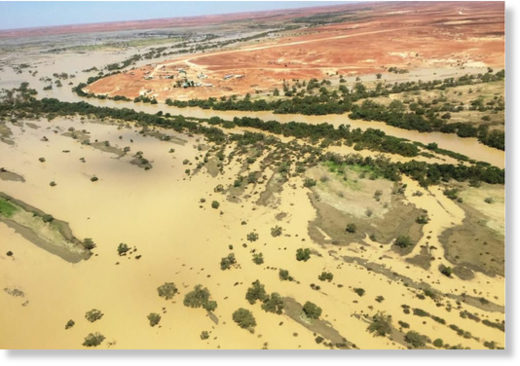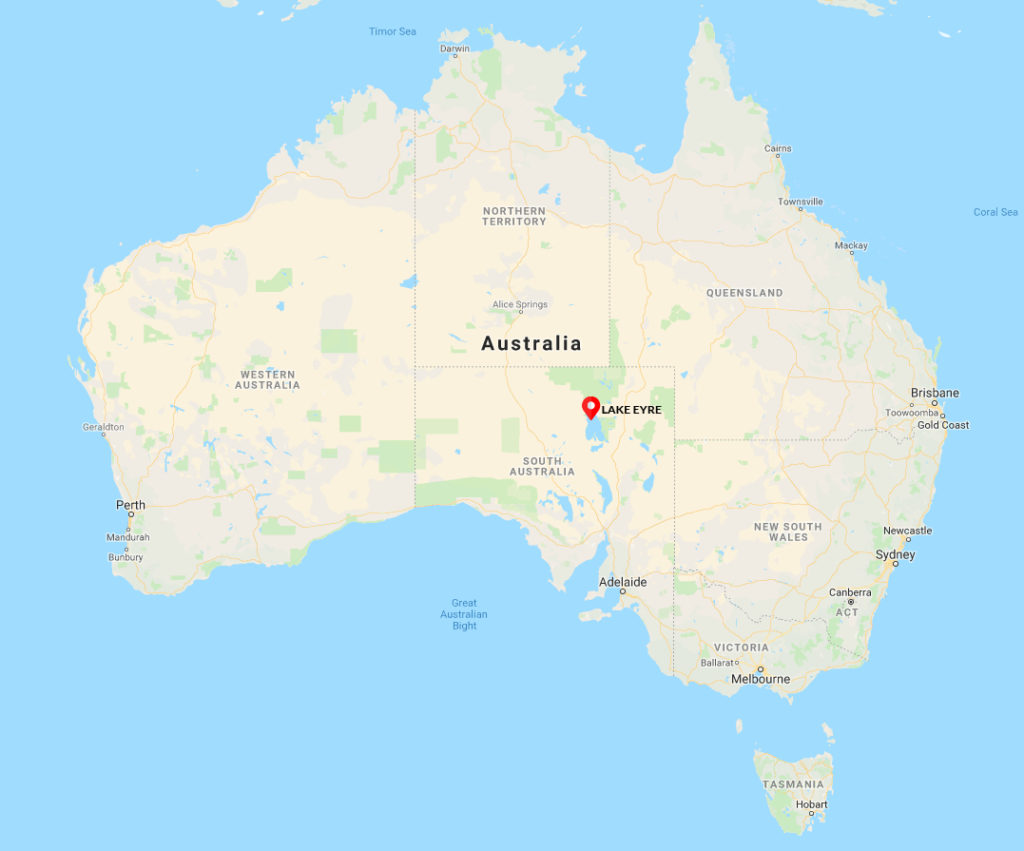Lake Eyre in northern South Australia is Australia’s biggest lake and the thirteenth largest in the world when full. It is also the lowest geographical point of the island nation at 15m below sea level. The usually dry lake system in the state of South Australia – believed by early European settlers to be home to an enormous inland sea – is about 500km from the coast and only fills about four times a century.

The last time it was full was 1974 but water from tropical cyclone Trevor and wet season rains in outback Queensland are flowing to the lake through a network of rivers that drain into a basin covering a sixth of Australia – about the size of Spain.
Officially known as Kati Thanda – Lake Eyre, the lake is about a third full with water levels expected to reach a peak – the highest level in more than 25 years – next month.
This has sparked a rare greening of the desert and attracted thousands of birds to an area that is usually among the driest, most inhospitable places on earth.
It is also attracting adventurous sailors from the Lake Eyre Yacht Club, who will compete in a unique outback regatta this week.

The Australian government’s Bureau of Meteorology National Flood Services Manager Alex Cornish said the 9500-square-kilometre lake would reach 50 per cent of its capacity in May – its highest water level since the early 1990s.
He said natural factors such as evaporation and the 1000km journey of the floodwaters through Channel Country to Lake Eyre made the event a rare natural phenomenon.
“It moves between 10 and 15km a day, which is quite slow. What can happen is that there will be rain but not enough of it, so it evaporates or it just soaks into the ground and it never makes it so it’s quite a rare thing to see the floodwater fill the lake. The floodplain that has already received water is vibrant green and bursting with life, and it’s set against the brown, which is the earth. The area just comes alive,“said Cornish.
The following time lapse satellite imagery by NASA shows the movement of water down from Queensland towards Lake Eyre and the greening of the Channel Country.
Lake Eyre has been identified by BirdLife International as an “Important Bird Area” because it acts as a major breeding ground for many bird populations when flooded, including Australian pelicans, gulls, sandpipers and terns.
Small fish and crustaceans are usually found in Lake Eyre too and provide an important food source for the migratory birds.
Early European explorers to Australia were confident they would find a vast inland sea in the middle of the dry continent.

In 1840, Edward John Eyre was the first European to lay eyes on the huge lake, which now bears his name. But as for the inland sea, Lake Eyre was bone dry.
Intrepid tourists from around the world are still attracted to the inland sea, particularly when the basin is in flood.
The tiny Oodnadatta Track township of William Creek – which basically consists of an outback pub and an airstrip – is the closest settlement to Lake Eyre and is about 700km north of Adelaide, the capital city of South Australia.
He said water had started to move into Lake Eyre in mid-March ahead of the May peak after first filling the Goyder Lagoon closer to the Queensland border.
Publican, pilot and Wrightsair owner Trevor Wright has operated charter flights in the region since 1992 and said the speed and volume of this year’s floodwaters had been greater than expected.

Daytime temperatures at Lake Eyre from December to March can reach 45°C but drop to about 20°C between May and August, which is also the peak time for tourists.
Wright said William Creek’s population – about 60km west of Lake Eyre – could swell to 200 during peak times.
When you see the water eventually making its way to Kathi-Thanda Lake Eyre, across the cracking clay soils, filling all those little cracks and rivulets across the expanse of Lake Eyre, it’s nothing short of a miracle.
You’re wondering how things can live out there and there’s water flowing through the creeks and birds flying around, and it’s just a stunning transformation.
Lake Eyre is one of those once in a lifetime events where people should get out there and have a look.
That big flood was pretty devastating for Queensland but it helped them because it filled the lake so it will give them a good tourist season. There’s always a positive side to catastrophes!
Follow us on FACEBOOK and TWITTER. Share your thoughts in our DISCUSSION FORUMS. Donate through Paypal. Please and thank you
[The Edge]











